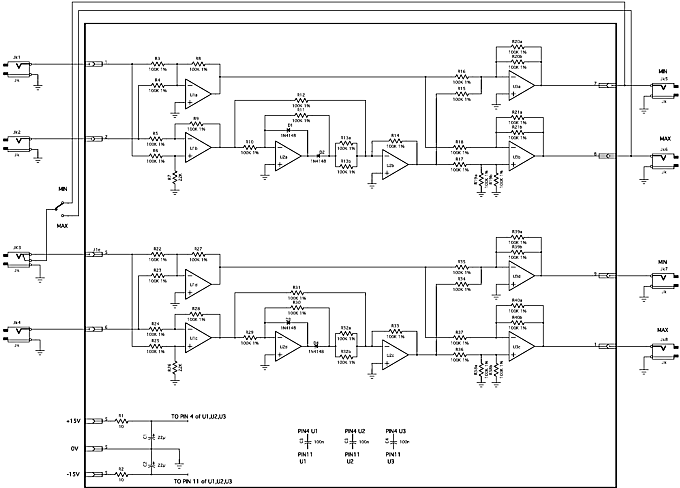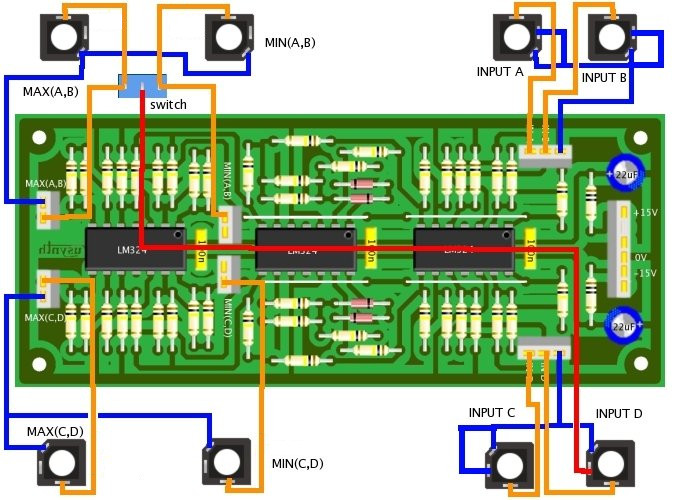| Update : may 8th, 2017 |
Mini-Maxi Voltage Processor |
 |
back to summary |
 |
 |
| Description |
| Update : may 8th, 2017 |
Mini-Maxi Voltage Processor |
 |
back to summary |
 |
 |
| Description |
 |
 |
Schematic diagram
|
 |
 |
 |
 |
 |
Building instructions
|
|||||||||||||||||||||||||||
|
|||||||||||||||||||||||||||
| |
|||||||||||||||||||||||||||
| Wiring | |||||||||||||||||||||||||||
 |
 |
 |
 |
 |
Settings and trimming
|
| This circuit requires
no trimming, it must work as is. |
 |
 |
|
|||
 |
 |